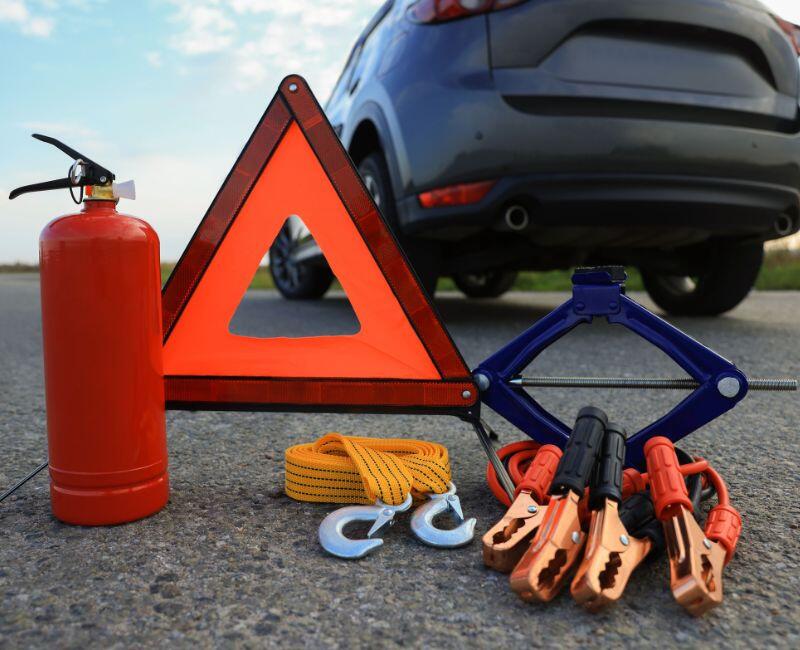Unexpected car breakdowns and roadside emergencies can happen at any time. Whether you’re commuting to work, taking a road trip, or simply running errands, having a well-stocked emergency car kit can make all the difference. Being prepared ensures your safety, helps you handle minor repairs, and keeps you comfortable while waiting for assistance.
1. Why You Need an Emergency Car Kit
Emergencies on the road can range from minor inconveniences like a flat tire to more serious situations such as getting stranded in extreme weather conditions. Having an emergency kit in your vehicle can:
- Provide safety and comfort while waiting for roadside assistance.
- Help you handle minor repairs and mechanical issues.
- Prevent prolonged exposure to harsh weather conditions.
- Offer peace of mind for you and your passengers.
2. Essential Items for Your Emergency Car Kit
A. Basic Safety and Visibility Items
- Warning Triangle – Essential for alerting other drivers of your presence in case of a breakdown.
- Reflective vest – Enhances visibility, especially at night.
- Road flares or LED emergency beacons – Help make your car visible in low-light conditions.
B. Car Repair and Maintenance Tools
- Jumper cables – Necessary for jump-starting a dead battery.
- Tire repair kit or spare tire – A must-have for flat tires.
- Tire pressure gauge – Ensures your tires are properly inflated.
- Multi-tool or basic toolkit – Useful for minor repairs and adjustments.
- Duct tape – Temporary fixes for unexpected damage.
C. First Aid and Personal Safety Supplies
- First aid kit – Should include bandages, antiseptic wipes, pain relievers, and gauze.
- Emergency blanket – Helps retain body heat in cold weather.
- Hand warmers – Ideal for winter driving conditions.
- Work gloves – Protect your hands while handling repairs.
D. Emergency Food and Water
- Bottled water – Essential for staying hydrated in case of delays.
- Non-perishable snacks – Granola bars, nuts, and dried fruits are good options.
- Collapsible water container – Useful for carrying extra water if needed.
E. Power and Communication Devices
- Fully charged power bank – Keeps your phone charged in emergencies.
- Flashlight with extra batteries – Necessary for nighttime breakdowns.
- Car phone charger – Ensures your phone stays powered for communication.
F. Seasonal and Weather-Specific Items
- Ice scraper and snow brush – Essential for winter driving.
- Cat litter or sand – Helps with traction if your car gets stuck in snow or mud.
- Rain poncho – Useful in rainy conditions.
- Sunscreen and hat – Important for summer road trips.
3. Organizing Your Emergency Kit
Keep your emergency kit neatly packed in a durable storage box or bag and store it in an easily accessible location, such as the trunk. Check your kit regularly to replace expired items and ensure everything is in working order.
4. Additional Tips for Road Safety Preparedness
- Learn basic car maintenance skills – Knowing how to change a tire or jump-start a car can be invaluable.
- Keep your gas tank at least half full – Prevents running out of fuel in case of delays.
- Check the weather forecast before traveling – Helps you prepare for potential road hazards.
- Have an emergency contact list – Include roadside assistance numbers and family contacts.
Being prepared for roadside emergencies can save time, reduce stress, and even prevent dangerous situations. By assembling a well-stocked emergency car kit and staying proactive with vehicle maintenance, you can ensure a safer driving experience for yourself and your passengers. Don’t forget to include a Warning Triangle for added safety and visibility in case of an emergency.

